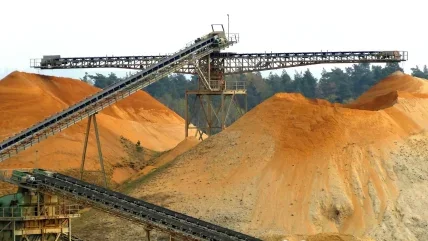
Xanadu Mines has announced that its Kharmagtai copper-gold project in Mongolia will require a pre-production capital expenditure (capex) of $890m, based on the findings of a pre-feasibility study (PFS).
The total pre-production costs include a contingency of $110m.
According to the study, the Kharmagtai project has the potential to become a long-term and low-cost mining operation. The copper-gold project is also expected to contribute to the global copper supply at a time when demand is rising due to electrification efforts.
The Kharmagtai copper-gold project is estimated to have mine life of 29 years.
In addition, the project’s production estimates range from 60-80 kilotonnes per annum (ktpa) of copper and 165-170 thousand ounces per annum (kozpa) of gold, delivered in two stages of expansion.
The project will employ conventional open-pit mining and sulphide flotation techniques.
The PFS projects a post-tax net present value (NPV) of $930m for the Mongolian copper-gold project. It also estimates an after-tax internal rate of return (IRR) of 21%, with a steady state payback period of four years.
Located in Omnogovi province, the Kharmagtai copper-gold project is owned 38.25% by Xanadu Mines, 38.25% by Zijin Mining, 13.5% by Xanadu Mines executive director Ganbayar Lkhagvasuren, and 10% by QGX.
The mine design comprises open pits at the Stockwork Hill, White Hill, Copper Hill, and Zephyr Golden Eagle deposits.
Xanadu Mines executive chairman and managing director Colin Moorhead said: “This Pre-Feasibility Study is the result of 18 months of hard work led by Spencer Cole, working closely with our joint venture partners at Zijin Mining Group Co Ltd.
“This confirms to an international PFS standard that Kharmagtai as a world class copper asset, located in a region of the South Gobi which hosts several significant deposits, including those at Rio Tinto’s Oyu Tolgoi mine.
“The future development of Kharmagtai into a long life, low cost, mine will provide significant value to our shareholders and multigeneration employment and economic opportunity for our stakeholders in Mongolia.”
In terms of environmental, social, and governance (ESG) considerations, the project is assessed as having low risk.
A bankable feasibility study (BFS) is expected to start in Q1 2025, with construction targeted for mid-2026, contingent on securing the required funding and approvals.






